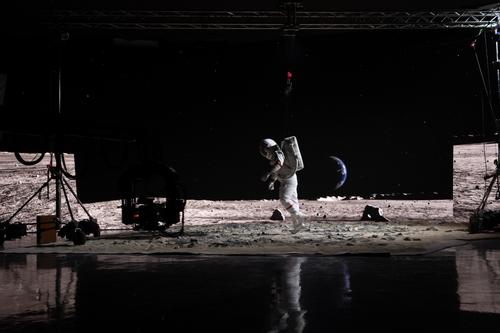Tracking camera movement with Panasonic’s AW-UE150: A Mo-Sys collaboration
Mo-Sys and Panasonic have combined forces to produce the first PTZ camera head with reliable tracking data. The AW-UE150 brings together Mo-Sys’ innovative StarTracker system with Panasonic’s latest PTZ developments in order to provide producers with a highly versatile camera head for virtual production, for use in both broadcast and film.
As part of its on-going LiveLab series, Mo-sys and Panasonic jointly demonstrated the capabilities of the AW-UE150 and fielded questions by global attendees from the broadcast, film and corporate video sector. For those that missed it, here are the main takeaways.
A creative collaboration
Mo-Sys’ partnership with Panasonic goes back quite some way. 16 years ago, the teams paired up to create AW-PH300 – a pan and tilt system with camera tracking capabilities. Moving with the times whilst pushing the boundaries of production technology, our latest efforts have culminated in one of the most agile VP-enabled camera heads on the market.

As the latest iteration in Panasonic’s PTZ series, the AW-UE150’s specifications are impressive. Able to shoot in 4K or HD, it has a 20x optical zoom and 75.1 degree wide viewing angle, making it ideal for shooting high-quality video from small spaces.
Perhaps its most innovative aspect, however, is how it integrates Mo-Sys StarTracker System. Rather than simply linking to separate technologies, the new head combines various units into one – ultimately providing producers with an incredibly simple yet high-quality virtual production system.
The Benefits
There are numerous advantages to incorporating the StarTracker system within the camera head. Here are the main ones:
- Movement – Traditionally, a camera-head used for virtual production is fixed in place, only able to pan and tilt a scene. With the StarTracker system, Panasonic’s camera head can move freely around a virtual or augmented environment, providing producers with unparalleled creative freedom in the studio.
- Calibration – There’s no need for lengthy calibration processes. Once set up, the AW-UE150 stores calibration data, meaning that broadcasters are able to use their virtual set without continual delays due to recalibration and homing the system.
- Simplicity – Whether mounted on a jib, crane, or dolly, the camera head can be controlled entirely by a single operator (particularly useful for studios encountering post COVID-19 safety restrictions), or operated remotely.
The potential of Panasonic’s camera head
Mo-sys’ technology has been used across a range of formats to give broadcasters greater creative freedom and drive engagement with viewers. In the States, The Weather Channel has used StarTracker to produce visually spectacular, immersive weather reports, whilst in the Netherlands, NEP is utilising our tech to enhance live sports and entertainment programs.
Panasonic’s AW-UE150 is expected to contribute to this push towards virtual set usage, representing an affordable option for small and large studios alike.
Jaume Miro, Project Manager for Panasonic Business, reflects on the potential of the AW-UE150, saying:
By having a camera tracking system like StarTracker, you do not have to worry about recalibrating the camera, you can move the camera around, either on a tripod, on a Panapod, on a dolly or on a jib. And the result is an immersive content that gets the most of the virtual graphics….StraTracker preserves the simplicity of the AW-UE150 for AR/VR, combining the tracking data from the camera with the absolute spatial position, in a single stream of data. And it does in a form factor that fits perfectly underneath the camera, matching the camera's color and shape.
If you’re currently considering virtual production, for either broadcast or film, please don’t hesitate to get in touch. Our expert technicians will be on hand to answer any questions you may have about virtual production, and offer the most viable solution for your project.




